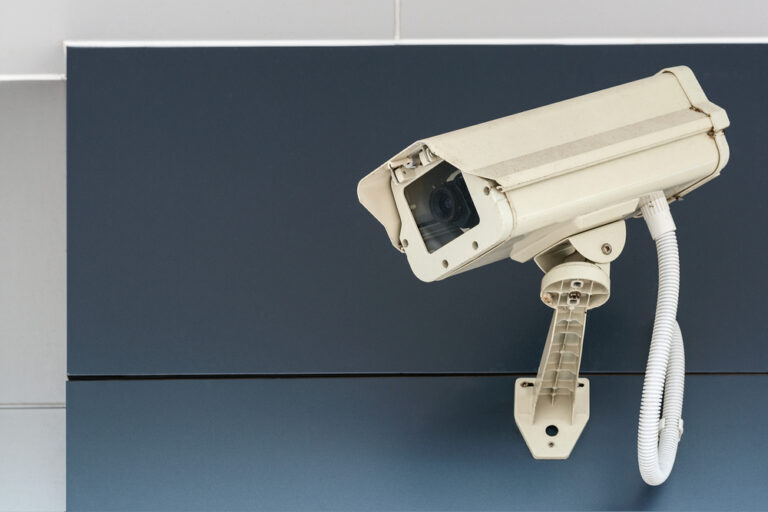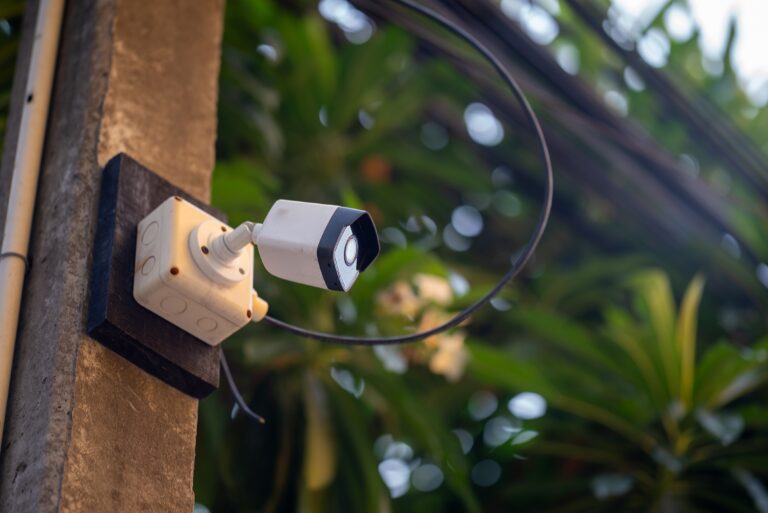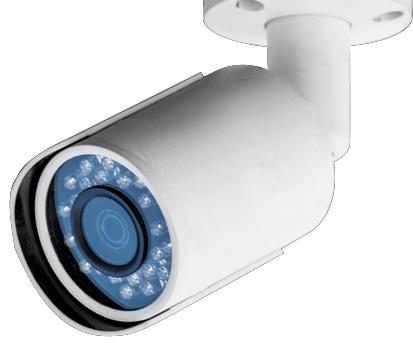- 1) Key Takeaways
- 2) The Role of Visual Analytics and AI in Law Enforcement
- 3) The Power of AI in the Cybersecurity Landscape
- 4) Harnessing Natural Language for Effective Data Management
- 5) Implementing Federated Data Governance for Better Data Management
- 6) Strategies for Building Strong Data Governance Backing
- 7) Exploring the Potential and Challenges of AI for Service Companies
- 8) From Hype to Reality: The Complexities of AI Implementation in Data Management
- 9) The Impact of AI on Cybersecurity: Detecting and Mitigating Threats
- 10) The Next Frontier: AI-Powered Email Security Solutions
- 11) Conclusion
-
12)
FAQs
- 12.1) How can visual analytics and AI enhance public safety?
- 12.2) What role does edge computing play in security surveillance?
- 12.3) How does AI help tackle the volume and velocity of data in security surveillance?
- 12.4) Why is transparency important when using AI for visual analytics?
- 12.5) What role does natural language processing (NLP) play in security data management?
In a world where data reigns supreme, visual analytics stands as the new sentinel in the realm of security surveillance. Misconceptions linger that traditional methods—static cameras and passive monitoring—are sufficient for modern threats, but burgeoning data sources and advanced criminal tactics call for a more robust solution.
As an expert in cybersecurity with extensive experience dissecting complex digital ecosystems, I’ve witnessed firsthand how integrating machine learning and computer vision propels law enforcement into an era of unparalleled efficiency.
The fusion of artificial intelligence with video analytics is revolutionizing our approach to safety and crime prevention. This potent combination renders real-time situational awareness not just possible but practical—a lone guard transformed into a legion of tireless sentinels.
By leveraging actionable insights from AI-powered analysis, security operations can transition from reactive bystanders to proactive protectors. Read on to discover how this technological evolution is making waves across industries, ensuring none remain blind spots in our collective vigilance.
Prepare to have your eyes opened wide.
Key Takeaways
- Visual analytics combined with AI dramatically enhances law enforcement capabilities, allowing for real-time responses to incidents and predicting potential criminal activities by recognizing patterns in vast data sources.
- The use of visual analytics tools like facial recognition and behavioral analysis improves public safety by identifying threats quickly and efficiently, which is crucial for proactive crime prevention and officer safety.
- Implementing advanced technologies such as NLP (Natural Language Processing) simplifies the management of complex security data, enabling more effective communication between humans and computers in cybersecurity efforts.
The Role of Visual Analytics and AI in Law Enforcement
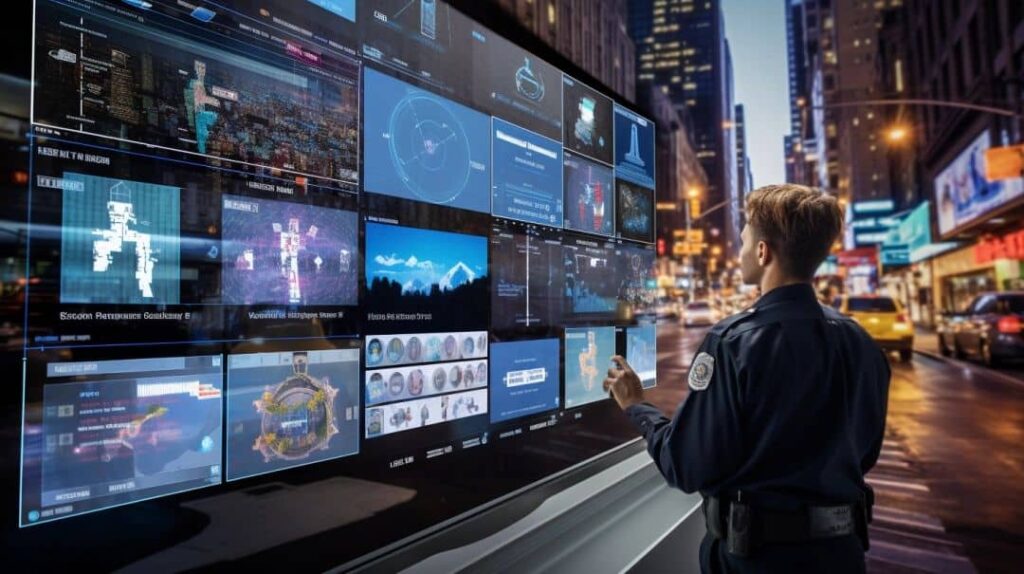
The integration of visual analytics and AI is transforming law enforcement, providing advanced tools for enhancing public safety, predicting potential criminal activities, fortifying officer security measures, and fostering the implementation of intelligent video technology directly at the edge.
Enhancing Public Safety
Visual analytics and AI are transforming the way law enforcement agencies handle public safety. By employing real-time situational awareness tools, police can respond faster to incidents, making communities safer for everyone.
Advanced video surveillance systems analyze footage to spot unusual behaviors or potential threats. This proactive approach not only deters crime but also helps officers catch dangerous individuals before they can cause harm.
Deploying drones equipped with high-resolution cameras provides a bird’s-eye view of large crowds during events, ensuring that any disruption is quickly addressed. Facial recognition technology identifies known suspects in seconds, cutting down the time it takes to secure an area.
These innovations lead to swifter action and less guesswork for those tasked with keeping the peace, clearly showing how modern tech plays a crucial role in bolstering public security measures.
Predicting and Preventing Crime
Keeping our streets safer goes beyond just watching over them; it involves smartly anticipating where threats might arise. Visual analytics, powered by machine learning algorithms and deep learning technologies, have revolutionized how police departments approach crime before it happens.
By sifting through immense volumes of data from video monitoring systems, these tools can identify subtle patterns indicating potential criminal activity. They transform raw footage into insightful foresight.
With this predictive power comes the ability to prevent incidents that could harm communities. Intelligent surveillance systems analyze human behavior through advanced facial recognition and geospatial data analysis.
They alert officers to suspicious activities in real time, enabling quick response to possible dangers. This proactive stance against crime is reshaping law enforcement strategies, turning security cameras into dynamic guardians of public safety.
Improving Officer Safety
Visual analytics and AI are becoming vital tools for increasing officer safety in the field. With real-time situational awareness powered by advanced analytics, law enforcement can respond more effectively to incidents while minimizing risks.
High-risk scenarios that officers face daily, such as traffic stops or active shooter situations, can be better managed with data-driven insights from visual surveillance systems. These systems use facial recognition and behavioral analysis to quickly identify potential threats, allowing officers to take precautionary measures before a situation escalates.
Smart video technology enhances safety protocols by providing critical information at a moment’s notice. It allows for low latency in communication between those on the ground and command centers, ensuring rapid decision-making during emergencies.
This integration of smart tech transforms control room operations into hubs of comprehensive modern technology—streamlining responses and safeguarding personnel. Transitioning seamlessly to the utilization of smart video and AI at the edge ensures continuity in cutting-edge practices for securing both public spaces and officers on duty.
Utilizing Smart Video and AI at the Edge
As law enforcement improves officer safety with cutting-edge technology, smart video and AI at the edge take security to new heights. Edge computing brings data processing closer to the source of data capture – right where cameras are recording activity.
This shift allows for quicker response times by analyzing video content in real-time, turning vast streams of visual data into actionable intelligence instantly. Officers gain crucial seconds in potentially life-threatening situations as smart algorithms identify threats and alert them without delay.
Deploying AI-driven visual analytics on the edge transforms traditional surveillance systems into proactive security assets. Cameras equipped with facial recognition capabilities can now detect persons of interest among crowds almost immediately.
Advanced machine learning models run directly on these devices, decreasing reliance on distant command and control servers, thus reducing latency and increasing efficiency. These advancements in edge computing not only enhance public safety but also streamline operations within law enforcement agencies by delivering insights where they’re needed most – out in the field where every second counts.
The Power of AI in the Cybersecurity Landscape

AI is revolutionizing cybersecurity, swiftly analyzing massive data streams to outsmart cyber threats—dive deeper to understand this game-changing tech.
Addressing the Volume and Velocity of Data
In an era where data never sleeps, the challenge for security surveillance is twofold: handling the immense volume of data and managing its rapid pace. Every second, countless bits of information are created from multiple sources like social media, video feeds, and IoT devices.
This deluge can overwhelm traditional systems, but visual analytics harnessed through AI cuts through this digital torrent to make sense of complex patterns. By rapidly processing and analyzing vast datasets, it transforms raw data into actionable intelligence for quicker decision-making.
Security teams now have a powerful ally in big data analytics when it comes to detecting subtle anomalies or trends that could indicate security vulnerabilities or cyberattacks. Visualizations bring clarity to mountains of data where danger often lurks unseen.
This integration leverages smart algorithms capable of sifting through high volumes with high velocity—ensuring environmental, social, and governance concerns are not compromised while keeping a vigilant eye on potential threats.
Fast exploratory data analysis (EDA) helps us see beyond the chaos to discern hidden insights within massive streams of surveillance footage or sensor outputs—a critical capability for maintaining public safety in our rapidly evolving digital landscape.
Tackling the Complexities of AI
Dealing with vast data volumes is only one piece of the puzzle. Understanding and harnessing AI’s potential adds another layer to the challenge. Smart cities rely on facial recognition systems and intrusion detection technologies, but these advanced tools come with their own set of complexities.
Security surveillance requires precision, and with AI’s deep learning capabilities, video streams become more than just footage; they transform into rich sources for behavioral insights and predictive analytics.
AI in visual analytics represents a leap forward for law enforcement agencies seeking real-time awareness. However, it demands expertise from data analysts trained in statistical techniques that sort through massive amounts of visual information efficiently.
Moreover, the use of explainable AI becomes essential to maintain transparency in operations while ensuring privacy concerns are addressed—an intricate balancing act where every decision impacts public trust and safety outcomes.
Ensuring Transparency and Privacy
Tackling the complexities of AI in security surveillance leads us directly to the critical issue of transparency and privacy. It’s vital for law enforcement agencies to maintain public trust while utilizing advanced technologies like visual analytics.
This means establishing clear protocols on how data is collected, analyzed, and stored. Security analysts must exercise judicious access controls to ensure sensitive information remains protected from unauthorized access or potential breaches.
In this high-stakes environment, every effort is made to safeguard individual privacy without hindering the effectiveness of visual analytic tools in crime prevention and public safety enhancement.
Techniques such as anonymization are employed before any analytical processing takes place, thus securing personal identities within video streams. Moreover, compliance with legal standards set forth by authorities like the Department of Defense and the Director of National Intelligence guides all operations within these systems ensuring they operate within ethical boundaries while bolstering national security.
Harnessing Natural Language for Effective Data Management

Harnessing natural language processing (NLP) allows for more intuitive data exploration, transforming the way we manage and interpret vast amounts of information. Security analysts can leverage NLP to sift through extensive security logs, detecting anomalies and patterns that could signify a breach or botnet activity.
This capability means complex data sets become accessible without the need for specialized query languages, making it possible for even non-technical personnel to engage with data security processes effectively.
With this technology’s growth, companies are now conquering one of the biggest hurdles in cybersecurity—the sheer scale and complexity of their data landscapes. NLP becomes a force multiplier by enabling clearer communication between humans and machines, enhancing operations support systems across various sectors.
The shift towards more organic interactions with our digital environments signals a major step forward as we prepare to roll out federated data governance structures aimed at bolstering overall data management strategies.
Implementing Federated Data Governance for Better Data Management

Moving from natural language processing to a broader scope, federated data governance stands out as a progressive approach in managing vast volumes of data. This model prioritizes collaboration and distribution of control across different departments or organizations, creating a more resilient and flexible data management system.
With the growing complexity of surveillance networks and security systems, adopting federated governance allows for quicker access to critical information while upholding strict privacy standards.
Agencies can securely share insights without compromising sensitive individual datasets by implementing federated protocols. Imagine law enforcement units that can swiftly combine efforts with other agencies to pinpoint potential security risks or identify patterns in criminal activity through shared analytics—all without exposing raw data.
Federated models support such synergies, making them vital for effective visual analytics integration in today’s high-stakes security environments.
Strategies for Building Strong Data Governance Backing

Building a solid data governance framework is crucial for organizations to manage their information effectively. Here’s how you can establish strategies that will strengthen your data governance efforts:
- Define Clear Objectives: Start by setting specific, measurable goals for what you want your data governance program to achieve. This could range from ensuring compliance with regulations like the Financial Conduct Authority to improving the quality of your data for better business intelligence.
- Establish Data Ownership: Assign responsibility for different types of data to appropriate members within the organization. Making sure each type of data has a clear owner helps in maintaining accountability and clarity over its management and use.
- Implement Policies and Standards: Develop comprehensive policies and guidelines that dictate how data should be handled, shared, and secured within the organization. Regularly update security patches to safeguard against vulnerabilities that hackers could exploit.
- Invest in Tools and Technology: Utilize advanced software solutions such as SIEMs (Security Information and Event Management) systems to monitor, analyze, and report on data activities. These tools can also help detect potential anomalies or breaches, acting as both intrusion detection systems (IDS) and intrusion prevention systems (IPS).
- Conduct Regular Training: Organize ongoing education programs for staff on best practices in data handling and awareness of cybersecurity threats. These trainings can minimize risks related to accidental mishandling of sensitive information or falling prey to phishing attacks.
- Measure Performance Consistently: Set up key performance indicators (KPIs) such as bounce rate or root causes analysis metrics to regularly assess the effectiveness of your data governance strategies. Adjust these strategies based on performance reviews to continually improve outcomes.
- Ensure Transparency: Foster an environment where processes are transparent, enabling stakeholders to understand how their data is being managed. This builds trust within both internal teams and external partners or clients.
- Promote Cross-functional Collaboration: Encourage various departments within the organization to work together in sharing insights gained through analytics. This collaboration ensures a cohesive approach towards managing data across different business units.
Exploring the Potential and Challenges of AI for Service Companies
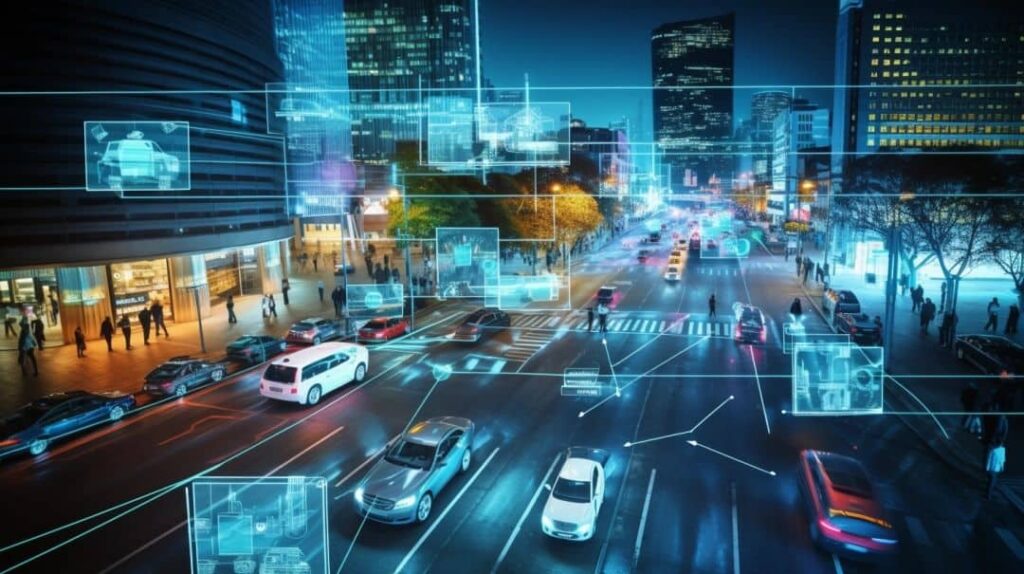
Just as strong data governance serves as the backbone for effective AI integration, service companies look to leverage this revolutionary technology to transform their customer experiences and operations.
AI offers a wealth of potential, automating mundane tasks and providing personalized service options that can significantly boost efficiency and satisfaction. Service providers are harnessing visual analytics to interpret complex customer data, allowing them to tailor services in unprecedented ways.
The intuitive insights derived from applying AI to massive datasets empower companies with the foresight needed to predict consumer trends, streamline support processes, and innovate offerings.
However, these advancements don’t come without hurdles. Implementing advanced technologies like AI demands considerable investment, not just in tools but also in training staff and revamping existing systems.
Companies face ethical questions surrounding privacy as they process sensitive user data with AI algorithms designed for intrusion prevention systems (IPS) or surveillance applications.
Balancing innovation with security remains crucial; businesses must safeguard against cyber threats while avoiding intrusive monitoring tactics. Ensuring video quality is paramount when it comes to maintaining trust and compliance – no simple feat when dealing with the vast amounts of information that modern surveillance produces.
Despite these challenges, companies pioneering the use of visual analytics are setting new standards for service excellence in an increasingly competitive landscape driven by technological progress.
From Hype to Reality: The Complexities of AI Implementation in Data Management

Integrating AI into data management is a complex journey that moves far beyond the initial excitement. Companies face numerous technical challenges, from ensuring the quality and consistency of data to integrating various systems and platforms.
As businesses navigate through these difficulties, they often find that developing an effective AI strategy demands meticulous planning and execution. It involves coordinating large volumes of data at high velocity, which can be daunting without the right tools or expertise.
Moreover, implementing AI for visual analytics in security surveillance requires robust algorithms capable of processing and analyzing video streams to produce valuable insights.
Maintaining transparency and privacy stands as a critical concern when adopting AI within data management frameworks. Stakeholders must address these issues head-on to gain public trust while harnessing powerful capabilities such as hyperspeed EDA for real-time situational awareness.
This pivotal step towards operations efficiency opens new doors for law enforcement agencies by establishing patterns linked with vehicles, ships, and clusters of individuals swiftly and effectively using advanced visualization methods.
The goal remains clear: leverage the next frontier in security surveillance – visual analytics powered by AI – moving forward into “The Impact of AI on Cybersecurity: Detecting and Mitigating Threats.”.
The Impact of AI on Cybersecurity: Detecting and Mitigating Threats

Artificial intelligence is revolutionizing the field of cybersecurity by rapidly detecting and responding to threats that were once nearly impossible for humans to handle alone. AI’s ability to monitor vast networks in real time means potential attacks can be identified before they cause harm.
With advanced machine learning algorithms, AI systems are becoming proficient at recognizing suspicious patterns and anomalies that indicate a cyber threat. They guard against sophisticated hackers by constantly updating their knowledge base with the latest threat data.
These intelligent systems use both intrusion detection systems (IDS) and intrusion prevention systems (IPS) to shield networks from unauthorized access and prevent malicious activities.
Cybersecurity infused with AI isn’t just reactive; it’s predictive, proactively understanding weaknesses within a system to bolster defenses before an attack occurs. This proactive stance is essential as hackers continuously evolve their tactics to bypass traditional security measures.
Moving forward into uncharted territory, AI-powered email security solutions stand ready as the next line of defense in the fight against digital threats.
The Next Frontier: AI-Powered Email Security Solutions
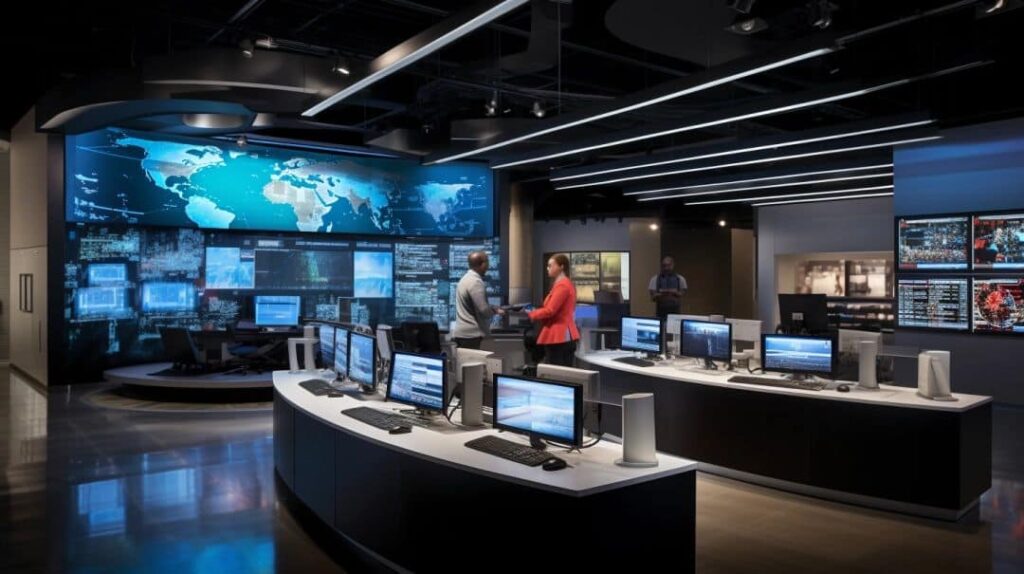
Building on the momentum of AI in cybersecurity, email security is undergoing a major transformation thanks to artificial intelligence. Hackers constantly find new ways to breach systems, but AI-powered solutions are stepping up to safeguard our inboxes.
These advanced systems learn over time to detect patterns that signal phishing, malware, and other cyber threats more efficiently than traditional security measures.
Employing techniques such as machine learning and natural language processing, AI-driven email security tools can scrutinize incoming messages for red flags often missed by humans or basic software.
They provide real-time defense—blocking suspicious emails before they even reach an inbox—and continuously adapt their detection strategies based on evolving cyberattack methods.
This is not just about keeping data safe; it’s about preserving the integrity of brands and protecting sensitive information from unauthorized access at every turn.
Conclusion

Visual Analytics is revolutionizing how law enforcement and security professionals approach surveillance, delivering insights with a speed and precision that was once just a pipe dream.
As we’ve explored, integrating AI into visual analytics takes us steps ahead in predicting crime patterns, enhancing public safety, and securing networks from cyber threats. These advanced tools are no longer the domain of science fiction; they offer practical solutions for today’s complex security challenges.
They empower analysts to sift through data at unprecedented speeds, make informed decisions swiftly, and maintain vigilance against evolving threats. Imagine harnessing this power to safeguard communities and infrastructure—it’s an actionable future within our grasp.
This exciting journey into Visual Analytics signifies a leap towards smarter, safer societies where technology meets tenacity in the quest for peace of mind. Visual Analytics signifies a leap towards smarter, safer societies where technology meets tenacity in the quest for peace of mind.
For innovative video surveillance solutions to enhance public safety, contact Jefferson Security Cameras at (267) 662-1423 or visit https://jeffersonsecuritycameras.com/contact/ to get a free quote and join the future of AI-powered security systems.
FAQs
How can visual analytics and AI enhance public safety?
Visual analytics and AI can enhance public safety by enabling real-time monitoring and rapid response to incidents. Advanced video surveillance leverages AI to analyze footage and identify threats or unusual behavior. This allows law enforcement to respond swiftly to disruptions and catch criminals before harm occurs.
What role does edge computing play in security surveillance?
Edge computing brings data processing closer to the source, right at the cameras capturing footage. This reduces latency allowing for real-time analysis of video, turning streams of visual data into actionable intelligence instantly. Officers can identify and respond to threats faster with smart algorithms running on devices in the field.
How does AI help tackle the volume and velocity of data in security surveillance?
AI systems can rapidly process massive datasets, detecting subtle patterns and anomalies that indicate threats. Visual analytics powered by AI cuts through torrents of data to transform it into meaningful insights for quicker decision making. This capability is crucial for monitoring immense surveillance data flows in real-time.
Why is transparency important when using AI for visual analytics?
It’s vital to maintain public trust while using advanced AI tools. Transparency establishes clear protocols on how data is managed to uphold privacy. Techniques like anonymization secure identities in footage. Following ethical guidelines ensures systems operate fairly while improving safety.
What role does natural language processing (NLP) play in security data management?
NLP enables more intuitive data exploration, allowing personnel without specialized query language skills to search security logs for signs of breaches or botnet activity. It transforms complex datasets into accessible information to enhance communication between humans and machines managing data flows.





